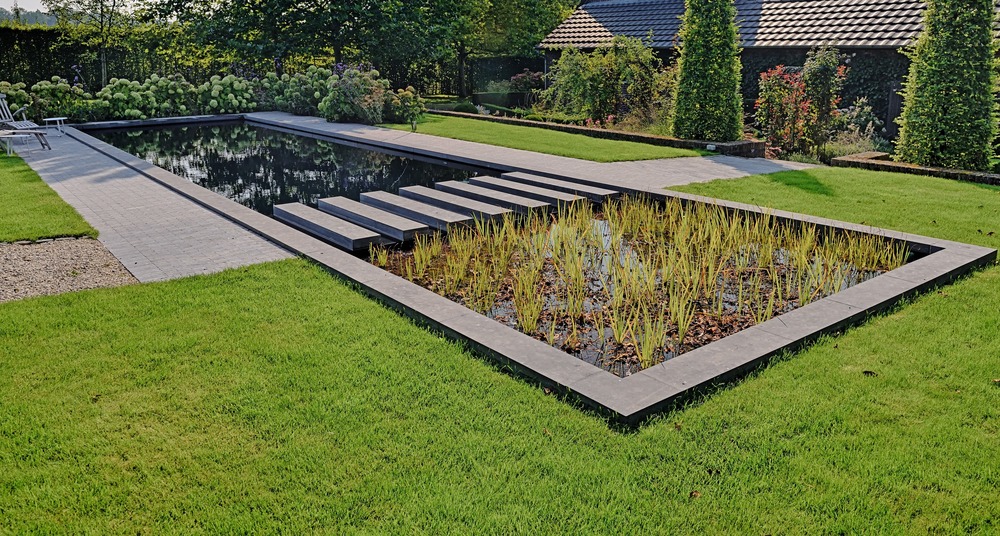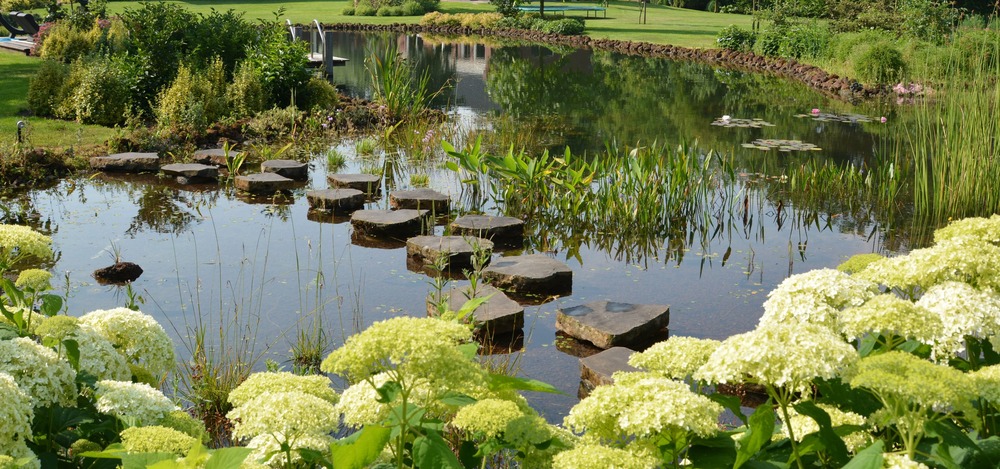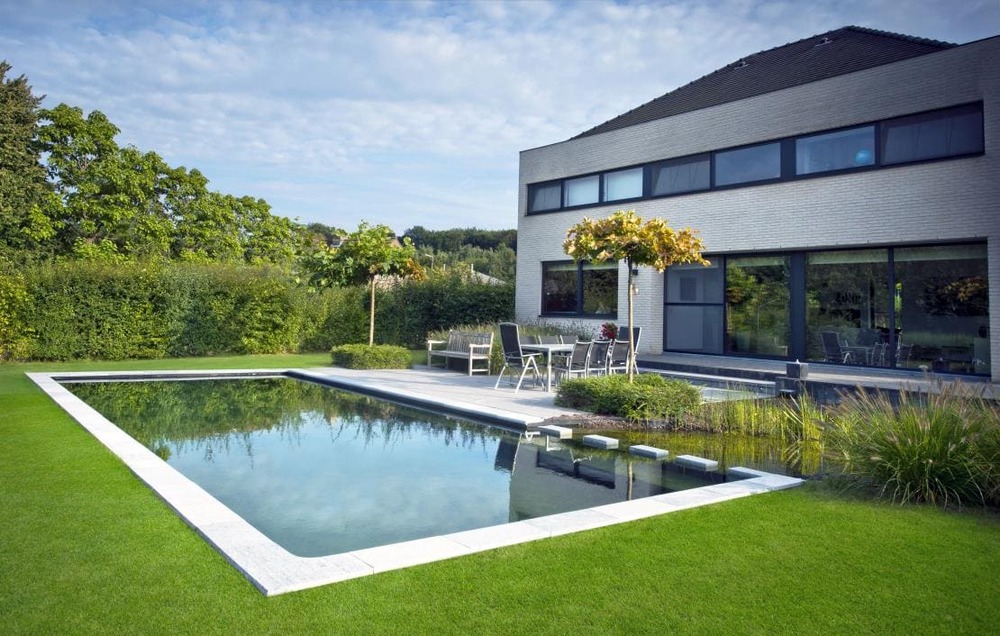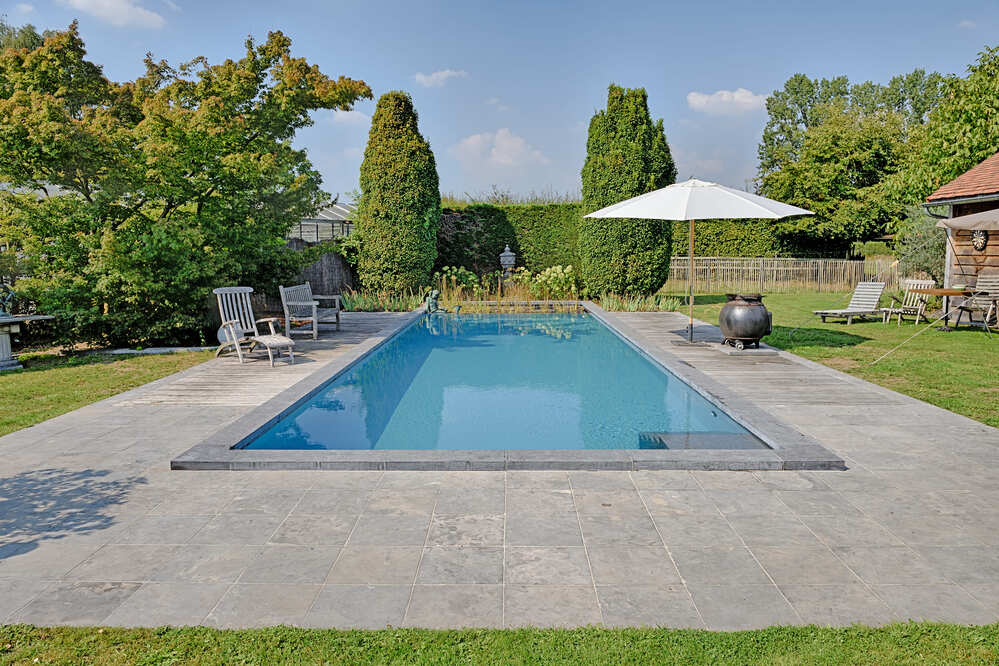Natural pool design trends allow operators to create unique, sustainable and healthy swimming experiences that make a difference
Natural pool design is gaining momentum among eco-conscious homeowners, spa operators and landscape designers looking to create low-impact, chemical-free aquatic environments.
Unlike traditional chlorine-based pools, natural pools employ biological processes, as well as mechanical and plant-based filtration systems to purify water. Also known as swimming ponds, these aquatic facilities offer a chemical-free swimming experience that mirrors the serene elegance of a natural lake or pond, while also ensuring energy efficiency.
In this article, we dive into the key characteristics of the best natural pool design practices, also including the essential pool accessories and design tips to create a successful natural pool.
Dive deeper with the eBook
What is a natural pool?
A natural pool is a man-made swimming area thoughtfully designed to mimic the self-sustaining ecosystems found in natural lakes and ponds.
As such, a main characteristic of natural pools is they rely on biological filtration systems instead of chemicals to maintain clean and clear water. In essence, this involves the generation of a self-sustaining water environment where a regeneration zone filled with aquatic plants and filtration media is used to naturally purify the water, replacing the need for chemical treatments.
As seen across the article, natural pool design is highly customizable and can take many forms, from formal swimming pools to more rustic, pond-like setups.
As such, their appeal stretches to anyone seeking a harmonious blend of modern convenience and natural environments, while also minimizing the facility’s environmental impact.

How do natural pools work?
At the heart of natural pool design is the concept of biological filtration: a system where mechanical and biological processes are employed to keep water clean, replacing the use of chlorine systems.
Applied to the pool, this concept forms the basis of the two-zone system, so that natural pools are divided into two main areas:
Swimming zone: the area designated for bathing, it can look like a conventional pool or a natural pond, depending on the chosen natural pool design style.
Regeneration zone: this area is planted with water-purifying vegetation such as reeds, water lilies, and grasses, which act as natural filters, removing impurities and absorbing excess nutrients that would otherwise support algae growth.
The result is a closed-loop system that mimics the balance of a natural ecosystem: as water continuously circulates between these zones, it passes through layers of gravel, sand, and plant roots, where beneficial bacteria break down organic matter and contaminants, thus ensuring healthy water for bathers.

Essential components in natural pool design for pool performance and upkeep
Although natural pools aim at keeping chemicals at a minimum, there are several systems and products that are critical for pool functionality and maintenance.
As such, the following components must be understood as vital allies upholding the essence of natural pool design: to become a self-sustaining, sustainable aquatic facility.
The following are some common components in natural pool design, which may or may not be incorporated depending on the specifics of each natural pool.
1. Skimmers and pumps
Skimming and circulation systems are mechanical devices that function as low-energy pumps with the aim of ensuring continuous water flow between the swimming and regeneration zones, aiding in oxygenation and filtration.
2. Biological and mechanical filters
Microorganisms present in natural pools play a crucial role in breaking down organic pollutants. As such, biological and mechanical filters (which may include gravel beds, lava rock filters, or constructed wetlands) are incorporated to support vital microbial life for ensuring a healthy aquatic ecosystem. Additionally, mechanical sieve filters remove coarse dirt particles from the swimming pond water, before it gets to the main bead filter.
3. UV-C clarifiers and phosphates
In areas with high sun exposure or warmer climates, UV-C water disinfection is incorporated as a means to manage algae without harming the beneficial bacteria in the regeneration zone.
On top of that, phosphate represents one of the main nutrients for algae (blanket weed) in a pond. With the aim of ensuring a balanced pool ecosystem and excellent water quality, the addition of filter cartridges allows to keep phosphate levels below 0,035 mg/l, thus preserving ecological balance.
4. Low salt water treatment
Low salt electrolysis/hydrolysis has established itself as a leading method for disinfection in recent years for all types of aquatic facilities, from conventional pools and natural swimming ponds.
The main drive behind their popularity is that these system’s oxidants are as powerful —or even more effective— than chlorine in achieving thorough disinfection and eliminating harmful pathogens, but without the undesirable by-products associated with chlorine. Today, saltwater disinfection represents one of the available systems capable of purifying water without producing chlorine.
5. Aquatic plants
Selected for their filtration capabilities and aesthetic value, plants like pickerelweed, cattails, hornwort, and water irises provide both function and beauty: on the one hand, they create a balanced water environment through filtration and oxygenation; on the other hand, they enhance the pool’s aesthetics, mimicking the look of wild aquatic environments.
6. Aeration systems
In some natural pool design choices, especially in larger pools, the addition of aerators or small waterfalls can enhance oxygen levels, supporting plant and microbial life while maintaining water clarity.

From rustic charm to modern facilities: the top natural pool design styles
The beauty of natural pool design lies in its adaptability to various aesthetic and environmental contexts. As such, the following are some of the key cues and concepts that can guide a natural pool design project:
1. Natural swimming pond aesthetics
This approach to natural pool design aims at mimicking the organic, freeform look of a pond or natural lake.
With irregular shapes, rock features, and lush aquatic plants, these swimming ponds blend seamlessly into garden landscapes and are ideal for rural or woodland settings, as they represent a minimal visual contrast between the pool and its surroundings.
2. Modern eco-pools
A perfect blend of sustainability and contemporary aesthetics, the modern eco-pool retains the geometric shapes and clean lines of a traditional pool while incorporating some of the fundamental elements that define natural pools, such as plant beds and natural filtration zones.
Ideal for urban or minimalist ambiances, natural pool design for these facilities might go a step further to elevate aesthetics, adding signature elements such as hardscaped decks, concrete edges, and underwater LED lighting.
3. Hybrid pools
Hybrid natural pools represent a blend of natural and conventional pool systems. As such, these setups may include backup chlorinators or heating systems for year-round usability, while still relying on biological filtration for the majority of water purification processes.
In this context, the extent to which traditional water treatment systems are used directly influences how natural the bathing experience feels — some natural pools decide on only relying on biological and mechanical filtration, even allowing fish and aquatic plants to coexist with bathers; on the contrary, others seek a bathing experience similar to conventional pools, and thus open the door to incorporating mechanical filtration with sustainable electrolysis systems for water treatment.

The environmental and health benefits of natural pool design
Natural pool design goes far beyond simply enhancing the aesthetic appeal of aquatic facilities; it represents a thoughtful approach to pool design where aspects such as environmental harmony and personal wellness coexist and create synergies.
As such, the following benefits associated with natural pools ensure they represent a key candidate for positive pools that go beyond merely checking environmental requisites to become a driving force in contributing to a more sustainable future:
Chemical-free swimming: No red eyes, skin irritation, or chemical smells—natural pools provide a safer, gentler swimming experience.
Low operational costs: Reduced reliance on chemicals and energy efficiency result in lower maintenance expenses over time.
- Biodiversity support: From frogs to dragonflies and birds, these pools can act as a major attractor for local wildlife, contributing to the creation and support of healthy ecosystems.
Water conservation: Natural pools typically don’t need to be drained and refilled, further reducing water usage.
FAQs about natural pool design
How to make a natural pool
As seen across the article, the basic notions to follow for natural pool design involve:
- Plan space for including two zones: the swimming zone and the regeneration zone. The latter is an area where aquatic plants and filtration media are installed in order to clean the water naturally.When implementing the regeneration zone, filtration media involves adding layers of gravel, sand or other alternatives, while also incorporating aquatic plants (pickerelweed, cattails, hornwort, water irises…), which will naturally filter and oxygenate the water. Aeration systems can be incorporated to aid plants.
- For water circulation purposes, pumps and skimmers should be installed.
- Biological and mechanical filters, as well as the addition of UV-C clarifiers and phosphates, must also be considered as a means to support beneficial microorganisms in natural pools while also guaranteeing a balanced ecosystem.
- Aiding in water treatment operations are low salt electrolysis treatments, which provide a more natural, chemical-free approach compared to chlorine.
How does a natural pool work?
The basic working principle behind natural pool design is to create a self-sustaining, closed-loop aquatic environment that uses biological filtration and ecological balance to keep the water clean and clear.
In order to do so, circulation systems ensure water flows between the bathing area and a regeneration area, where layers of gravel, sand and plant roots are in charge of breaking down organic matter and water contaminants.
Do natural pools need chemicals?
As seen in detail across the article, natural pool design enables the creation of very diverse swimming environments: the options are multiple and start from the extremely realistic natural pond experiences, extending along a continuum toward other hybrid approaches where backup chlorinators, sustainable electrolysis systems and even heating systems can be incorporated.
In this continuum, some operators might decide to rely solely on aquatic plants and filtration media for naturally cleaning water. For others, options such as saltwater electrolysis systems allow for a thorough water treatment while still avoiding chemicals such as chlorine.
Natural pool design as a key enabler to merging sustainable innovation and outdoor aesthetics
As interest in sustainable living continues to grow, natural pool design offers a refreshing alternative to conventional pools.
From the gentle sound of water filtering through plants to the crystal-clear, chemical-free swimming experience, natural pools merge the best of ecological science and landscape artistry at the service of creating unique, eco-friendly recreation spaces.
Whether you envision a rustic pond nestled in a lush garden or a sleek, modern oasis that is also eco-conscious, investing in a natural pool showcases a commitment to promoting well-being and environmental responsibility. As such, it’s becoming a hallmark of outstanding recreational and hospitality projects that allows them to provide a distinct experience in a crowded market.
Fluidra accompanies operators looking to implement their natural pool design projects. With the aid of our Netherland’s branch SIBO and the Aquaforte products, we offer a wide range of systems for natural pools and swimming ponds which cover all natural pool design needs.
